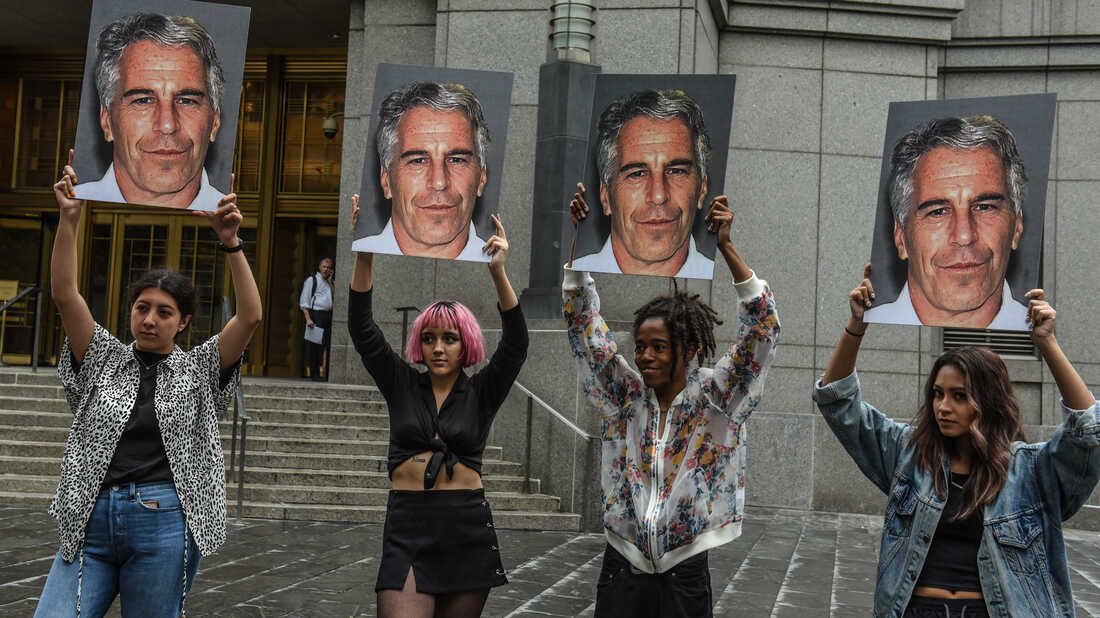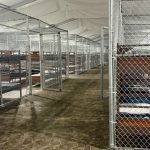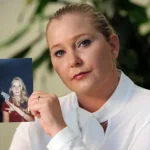
Unheard Voices: The Layers and Lies Behind the Epstein Victims’ Stories.
The Jeffrey Epstein case was never just about one man. Survivors like Maria Farmer and Courtney Wild were ignored, dismissed, and silenced for years. Their stories reveal how banks, prosecutors, and institutions enabled abuse through secrecy, fear, and profit. This post uncovers the whistleblowers’ warnings, the hidden client list, and the price of systemic failure.
Beyond the headlines of the Jeffrey Epstein case — this post brings to light the accounts of the women and girls who faced years of silence, disbelief, and institutional failure. From overlooked reports to global cover-ups and the elusive client list, explore the messy, uncomfortable reality hiding behind the lurid headlines.
Personal confession: The first I heard about Jeffrey Epstein was through a passing headline, one of those news items you want to scroll past but can’t. Curiosity turned into outrage as I learned about the cacophony of silenced voices — not just another scandal but a pattern of real lives systematically ignored, with power snuffing out justice at every turn. So here’s a dive past the headlines: into dark alleys, missed opportunities, and the courage it takes just to be heard.
The Forgotten Warnings: Whistleblowers Before the World Was Watching
Before Jeffrey Epstein’s name became a headline, before the world started asking about flight logs and black books, there were women who tried to sound the alarm. Their stories—ignored, buried, or dismissed—show just how deep institutional failures ran. These early whistleblowers, like Maria Farmer and Courtney Wild, were not only fighting for their own legal rights, but also for a system that would actually protect the vulnerable. Instead, their warnings fell on deaf ears, and the cycle of abuse continued unchecked.
Maria Farmer: The First to Speak, the First to Be Ignored
Back in 1996, Maria Farmer was a 26-year-old art student with big dreams and a promising internship in Manhattan. She met Jeffrey Epstein and Ghislaine Maxwell through her boss, who encouraged her to network with them. What followed was a nightmare. Maria was invited to Les Wexner’s secluded Ohio estate under the guise of working on a private art project. Instead, she was assaulted and held against her will. After escaping, she went straight to the NYPD and the FBI, filing detailed reports about what had happened.
But nothing happened. The authorities took her statement, but the case never moved forward. Her report was quietly shelved, and her name never came up when Epstein was later charged. Maria’s warnings could have stopped years of abuse, but instead, they were ignored. As research shows, this kind of institutional neglect enabled Epstein to expand his network and continue abusing girls for years. In 2019, after Epstein’s arrest, Maria’s story resurfaced. By 2023, she was suing the U.S. government for failing to act on her original report, saying federal agents ignored a credible warning that could have prevented so much harm.
Courtney Wild: Fighting for Legal Rights That Should Have Been Hers
Maria wasn’t the only one. Courtney Wild was just 14 when she met Epstein in Palm Beach. She was a middle schooler, lured in by the promise of quick cash for massages. What started as $200 in cash quickly turned into something far darker. Courtney was abused more than 40 times and, like many others, was pressured to recruit other girls just to avoid being called back herself.
By the time Epstein was arrested in 2005, Courtney had already reported him to police. But the system failed her, too. In 2008, federal prosecutors gave Epstein a secret plea deal—one so hush-hush that even the victims weren’t told. No input, no justice. Courtney’s words cut deep:
“My voice was muted by the same government that was supposed to protect me.”
She didn’t stop fighting. Courtney took the Justice Department to court under the Crime Victim’s Rights Act, arguing that her legal rights had been violated. While the case didn’t end in her favor, it cracked open the door for others. Her battle shined a harsh light on just how broken the system was when it came to institutional protection for survivors.
Years of Dismissed Warnings: More Victims, More Damage
The stories of Maria Farmer and Courtney Wild prove that the failures weren’t just about one bad apple or one missed report. This was a pattern—one that allowed Jeffrey Epstein and his network to keep operating in plain sight. Research indicates that institutional failures enabled years of ongoing abuse, and victims had to fight tooth and nail for even basic legal recognition. Every time a warning was ignored, it emboldened abusers and left more girls vulnerable.
- 1996: Maria Farmer files her report—no action taken.
- 2008: Epstein gets a secret plea deal—victims excluded.
- 2019: Old reports resurface; lawsuits against the U.S. government begin.
These are not just dates on a timeline—they’re milestones in a long history of missed chances and muted voices. The ignored pleas of early whistleblowers like Maria and Courtney show how systems designed for institutional protection can end up protecting the wrong people. Their stories are a reminder: when legal rights are denied, the most vulnerable pay the price.
The Web: Epstein’s Network of Abuse and Silence
When you look at the stories of Epstein victims, it’s impossible to ignore how wide and tangled the Epstein network really was. Survivors like Virginia Giuffre, Annie Farmer, and Jennifer Araoz didn’t just tell their own stories—they ended up mapping out the entire system that let Epstein’s sex trafficking operation thrive for decades.
Layers of Abuse: More Than Just Epstein
Research shows that Epstein’s crimes were never a solo act. He had homes in New York, Florida, New Mexico, and on Little St. James in the Virgin Islands. Each location was part of a bigger machine, with staff, assistants, and enablers making sure everything ran smoothly—and quietly. Ghislaine Maxwell was at the center of it all, proven in her 2021 conviction for grooming and facilitating underage girls for Epstein and his powerful friends.
Take Virginia Giuffre (then Virginia Roberts), for example. She was recruited at just 15, while working at Mar-a-Lago. Maxwell approached her, promising opportunity, but what followed was a nightmare of trafficking that spanned continents. Virginia’s allegations didn’t just stop at Epstein—they reached Prince Andrew and other high-profile figures, showing how deep the Epstein network went. Flight logs, photos, and sworn statements placed her everywhere Epstein operated.
Silencing the Victims
The system wasn’t just about moving girls around. It was about keeping them silent. Survivors describe threats, psychological captivity, and a constant sense of being watched. Sarah Ransome said Epstein threatened to kill her and her family if she ever spoke out. Others, like Maria Farmer, reported abuse to the FBI as early as 1996—only to be ignored. Maria even filed a lawsuit against the U.S. government in 2023 for failing to act on her warnings.
Courtney Wild was only 14 when she met Epstein in Palm Beach. She tried to report him, but when Epstein got a secret plea deal in 2008, she and other victims weren’t even told. “My voice was muted by the same government that was supposed to protect me,” she said. Courtney’s fight for justice led her to sue the government, opening the door for other survivors to come forward.
Ghislaine Maxwell: The Gatekeeper
Maxwell’s conviction in 2021 was a turning point. Her trial made it clear: Epstein never acted alone. She was the gatekeeper, recruiting, grooming, and normalizing abuse. Survivors like Annie Farmer testified publicly, describing how Maxwell made inappropriate contact under the guise of care. Annie’s courage in speaking out helped secure Maxwell’s conviction. As she said in court:
May this sentence demonstrate that it is never too late for the truth to come out.
The Industrial System of Silence
The Epstein network was industrial in scale. Jennifer Araoz was just 14 when she was recruited outside her Manhattan high school. She later filed a lawsuit not just against Epstein and Maxwell, but also against the staff—drivers, assistants, schedulers—who kept the operation running. Her story, like so many others, showed that the abuse was systematic and organized.
- 2001: Virginia Giuffre recruited at age 15
- 2019: Maxwell charged; Araoz files suit
- 2021: Maxwell convicted on multiple federal charges
Even banks and big corporations played a role in keeping things quiet. In 2023, JP Morgan Chase settled with Epstein victims for $290 million after emails revealed they ignored warnings about suspicious payments. Deutsche Bank settled for $75 million. These weren’t just slip-ups—they were signs of institutional protection.
Despite all the evidence, the full client list remains sealed. Judges cite privacy and ongoing investigations, but for survivors, it feels like the same old story: the powerful are protected, while victims are left to fight for scraps of justice. The details shared by survivors make one thing clear—Epstein’s sex trafficking operation was built on layers of silence, threats, and a network that reached far beyond one man.
Who Hides the Truth? The Client List, Institutional Failures, and the Price of Silence
The Epstein Investigation is a story that just never seems to end. For years, people have been asking the same question: where’s the client list? Who are the powerful figures who moved through Jeffrey Epstein’s world, and why does it feel like the truth is always just out of reach? The answer, as it turns out, is tangled up in layers of institutional protection, legal maneuvering, and a whole lot of silence bought by money and influence.
Let’s start with the infamous “client list.” It’s become almost mythical at this point—flight logs, Epstein’s black book, and sealed court records all hint at hundreds of names. Some of those names have trickled out over the years: politicians, celebrities, billionaires. But the full list? Still locked away, with judges and federal agencies citing “privacy concerns” or “ongoing FBI investigations” as the reason for keeping things quiet. On paper, that sounds reasonable. In reality, it’s a shield for abusers, a way for the powerful to dodge the consequences that would ruin anyone else’s life.
Research shows that this secrecy isn’t just about protecting investigations—it’s about protecting reputations, careers, and entire institutions. As Juliet Bryant, one of Epstein’s survivors, put it:
“If they release information, it’s going to break people’s minds. It’ll break—it’ll bend their brains. A lot of people won’t be able to handle it. So, I suppose that’s why they don’t know what to do, ‘cause if they release the truth, all hell will break loose.”
And it’s not just the courts or the FBI Investigation keeping things under wraps. Banks like JPMorgan Chase and Deutsche Bank played a huge role in enabling Epstein’s crimes. Internal emails revealed that senior executives at JPMorgan were warned about suspicious cash payments to young girls, but they kept servicing Epstein’s accounts anyway. In 2023, JPMorgan paid a staggering $290 million in settlements to Epstein’s victims. Deutsche Bank followed with a $75 million settlement. These weren’t just “oops” moments—they were signs of systemic failure, or maybe even willful blindness, all in the name of profit.
The media, too, has shaped the narrative in ways that often leave survivors feeling sidelined. Sure, there are headlines when something big breaks, but the deeper stories—the ones about girls who tried to warn authorities, or about the legal deals made behind closed doors—tend to get lost in the noise. Sometimes, it feels like the public is only allowed to see what the powerful want them to see. The rest? Swept under the rug, edited out, or spun into something unrecognizable.
What’s wild is that the Epstein Charges and settlements have exposed just how deep this rabbit hole goes. We’re not just talking about one man’s crimes. We’re talking about a network—of recruiters, enablers, institutions, and yes, clients—who all played a part in keeping the abuse going. And every time a new piece of the puzzle comes out, it’s clear that the survivors were right all along: the system is rigged to protect the wrong people.
So, why does the client list stay secret? Why do banks pay settlements instead of facing real accountability? Why do survivors like Maria Farmer and Courtney Wild have to fight for years just to have their voices heard? The answer is simple, but also infuriating: power protects itself. The price of silence is paid by the victims, while those with money and connections get to walk away.
In the end, the Epstein Investigation is about more than just one man or one list. It’s about the ways our institutions—banks, courts, the media, even the government—fail to protect the vulnerable when it really counts. Until the full truth comes out, and until there’s real accountability, the price of silence will keep being paid by those who can least afford it. And that’s something none of us should accept.
TL;DR: At its core, the Epstein saga is not just about one man’s crimes, but a system that buries voices and protects power. Listen to the survivors: their stories illuminate what the headlines never do.
JeffreyEpstein, EpsteinVictims, EpsteinTimeline, EpsteinInvestigation, EpsteinCharges, VirginiaGiuffre, GhislaineMaxwell, ChildAbuse, SexTrafficking, InstitutionalProtection,MariaFarmerwhistleblower, CourtneyWildEpsteinlawsuit, Epsteinclientlistsecrecy, GhislaineMaxwellconviction, systemicabusecover-up
#EpsteinFiles, #SurvivorStories, #ChildAbuseAwareness, #JusticeForVictims, #ExposeTheTruth, #SexTrafficking, #InstitutionalFailure, #EpsteinInvestigation,#EpsteinVictims, #Whistleblowers, #JusticeForSurvivors, #InstitutionalFailure, #GhislaineMaxwell, #CrimeAndCoverup

